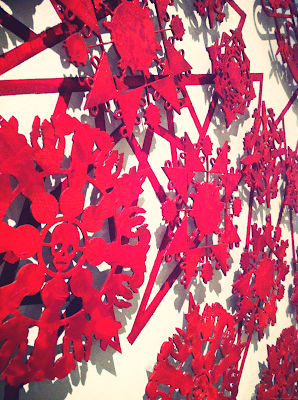“We could do with some meringue and cream to liven these up,” laments the striking redhead sitting opposite me, glancing wistfully at the punnet of winter strawberries on her lap. Elizabeth Fitzgerald, corsetiere and founder of Sweet Fanny Anne, is at once elegant and tomboyish. She wears dungarees and a Led Zeppelin t-shirt as she talks enthusiastically to me about her love for creating silk corsets and how she delights in all things fetish.
Born in Birmingham, Elizabeth spent her formative years in the town of Warwick, attending Warwickshire School of Art. Unsatisfied by the generic nature of clothes design she tried her hand at underwear and truly found her flow in corsetry. “I love creating corsets, they are personal and building something that’s so strong and enduring, to me, is very rewarding. Plus, there’s nothing like having something tailor-made, just for you.”
Elizabeth’s designs tread the line between bodice-ripping fetish and tea-drinking gentility, creating a dialogue with current Victorian and Freudian influences. We discuss Cronenberg’s new film A Dangerous Method, which sees Fassbender and Knightley, in a state of dishabille, engage in a notorious scene of indulgent S&M, and how this has ignited a mainstream interest in an act hitherto confined to the privacy of bedrooms, laptops and secret clubs: “I think an open awareness of S&M is just what the sex and lingerie business needs," she explains, "everyone knows 99% of people are into light kink, but we deny its existence outside our relationships. With this film people may come to realise that they’re not alone and lingerie will finally become less about secret crotchless panties and more about strength, class and pride in what you are doing. Hooray for Freud!”
Sweet Fanny Anne is merely one of this girl’s passions. She intends to set up an all-encompassing label and build on her range of corsets. “I long for beautiful old school finishes that modern garments lack,” she says, smiling, “I miss the cover buttons and roll hems, the hand-finished bias bindings and the French seams, so I’m bringing them back, with a latex finish.” And apart from anything else, her fancy-dress costume of choice is “just some well selected Agent Provocateur underwear and a giant freaky rabbit head”. Surely, this alone speaks volumes.









